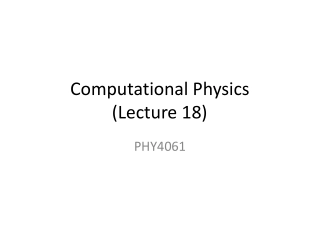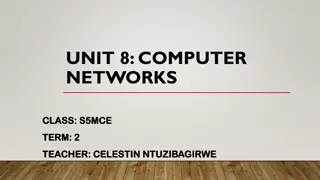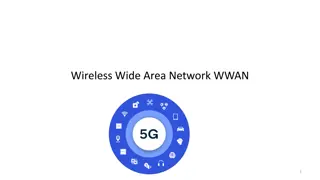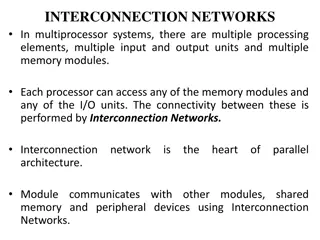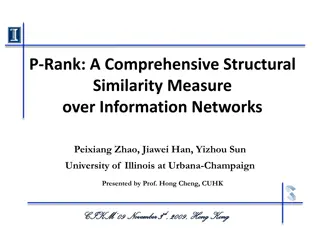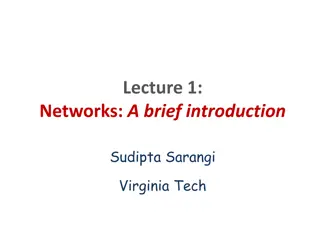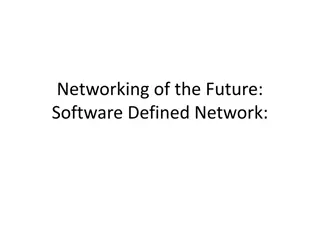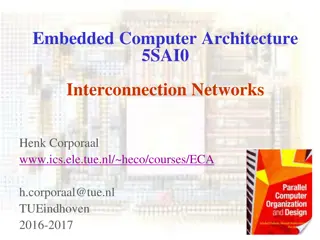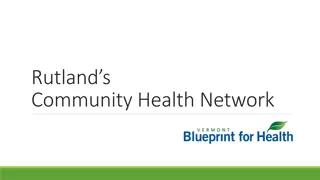
Networks in Grade 11: Components, Types, and Security
Explore the world of networks in Grade 11, covering basic components, types like LAN and Internet, network security, ethical use, and more. Learn about hardware components, communication methods, and advantages like WLAN over LAN for easy installation and mobility. Discover how to recognize network connections and the importance of network interfaces. Enhance your knowledge for a comprehensive understanding of networks.
Download Presentation

Please find below an Image/Link to download the presentation.
The content on the website is provided AS IS for your information and personal use only. It may not be sold, licensed, or shared on other websites without obtaining consent from the author. If you encounter any issues during the download, it is possible that the publisher has removed the file from their server.
You are allowed to download the files provided on this website for personal or commercial use, subject to the condition that they are used lawfully. All files are the property of their respective owners.
The content on the website is provided AS IS for your information and personal use only. It may not be sold, licensed, or shared on other websites without obtaining consent from the author.
E N D
Presentation Transcript
1 Computers, part of your life Grade 11
Local area networks Module 2.1 2
Contents 3 Types of networks Basic components of a network Advantages and disadvantages of a LAN Basic network security Ethical use of networks Test and improve
Types of networks 4 Classified according to the area that they cover PAN organised around an individual HAN network in a home environment LAN small area, generally in one building Internet worldwide computer network Intranet organisation s private network
Basic components of a network Hardware 5 Computers and peripherals Client tablet desktop laptop smartphone
Basic components of a network Hardware 6 Computers and peripherals Server internet / proxy server file server email server web server print server database server
7 Presence of extra (logical) drives such as U:, V: and T: Presence of other computers in Network Access to devices (e.g. printers) not directly attached to the computer Indicator showing network activity in the notification area How do you know you are connected to a network?
Basic components of a network Hardware 8 Network Interface Controller Switch To connect computers in a network so communication can occur NIC to connect device to network via cable Wireless adapter and NIC both built into device
Basic components of a network 9
Basic components of a network Communication methods 10 WLAN advantages compared to LAN Easier to install Easier and more practical between buildings Easy to add or move computers Adds mobility users with mobile devices Avoids clutter
Basic components of a network 11 Communication methods Cables Wireless Wireless enabled / wireless adaptor UTP Fibre optic cable Wireless access points (Unshielded Twisted Pair)
Basic components of a network 12 Fibre cable UTP cable Only spans certain distance signal loss Can be eavesdropped on Affected by electrical sources Uses electrical signals to transmit data Spans much longer distances Immune to eavesdropping Not affected by electrical sources Uses light signals to transmit data Faster data transmission than UTP cable
Basic components of a network 13 Data transmission speed Rate at which data is transferred over the media used E.g. 100 Mbps / 1000 Mbps Maximum speed depends on cabling and devices (switches and NICs) 802.11 specification wireless adapter (802.11g and 802.11n different speeds) WLAN is slower than a cabled LAN
Basic components of a network Network software 14 Software that controls communication and security in a network Most operating systems have built-in networking capabilities For larger networks Server editions of the operating system are installed on the servers
Advantages and disadvantages of a LAN 15
Advantages of a LAN 16 Single internet connection shared by users Files stored on central computer users access from any computer in network Easier to keep software up to date Files transferred without use of devices Software can be demonstrated or broadcast to other computers Software shared by users Hardware shared by users Internet access monitored and controlled Security in network controlled
Disadvantages of a LAN 17 Can be expensive to install and maintain Network administrator oftenneeded to manage Network security must be maintained If file server faulty, no one can access their files Additional potential disadvantages if wireless (WLAN) Security can be compromised easier for unauthorised persons to gain access Performance can decrease as number of computers connected increases Signal loss or interference due to electrical interference
Basic network security 18 Rules to ensure the security of a network preventing unauthorised access to information and network misuse Access to confidential files must be restricted In a school situation important that learners do not have access to tests before they are written A username and password are used to gain access to network resources Choose a password known only to you Keep your password secret!
Choosing and managing passwords 19 At least 8 characters long Mixture of upper and lowercase letters, numbers and special characters Do not use anything that is easy to guess about you Do not use passwords that follow a pattern on the keyboard such as asdf or 1234 Change password every 2 months or so Do not use same password for more than one site Example of a good password Q1w2E3R4t%y
Ethical use of networks 20 Need for acceptable, ethical practices Acceptable Use Policy (AUP) outlines the rights and responsibilities of users, especially in networked environments AUP lists what users may and may not do on the network Designed to protect both the user and the business / organisation / school when using ICT facilities
What should be included in AUP 21 Basic netiquette rules Restrictions on what may be accessed online Restrictions on amount of data downloaded from internet Importance of responsible ethical / legal / safe practices Details on where and when portable storage devices may be used Restrictions on installing hardware and software Procedures for victims of identity theft, malware, cyber- bullying, cyber-stalking Consequences of violating conditions set out in AUP

